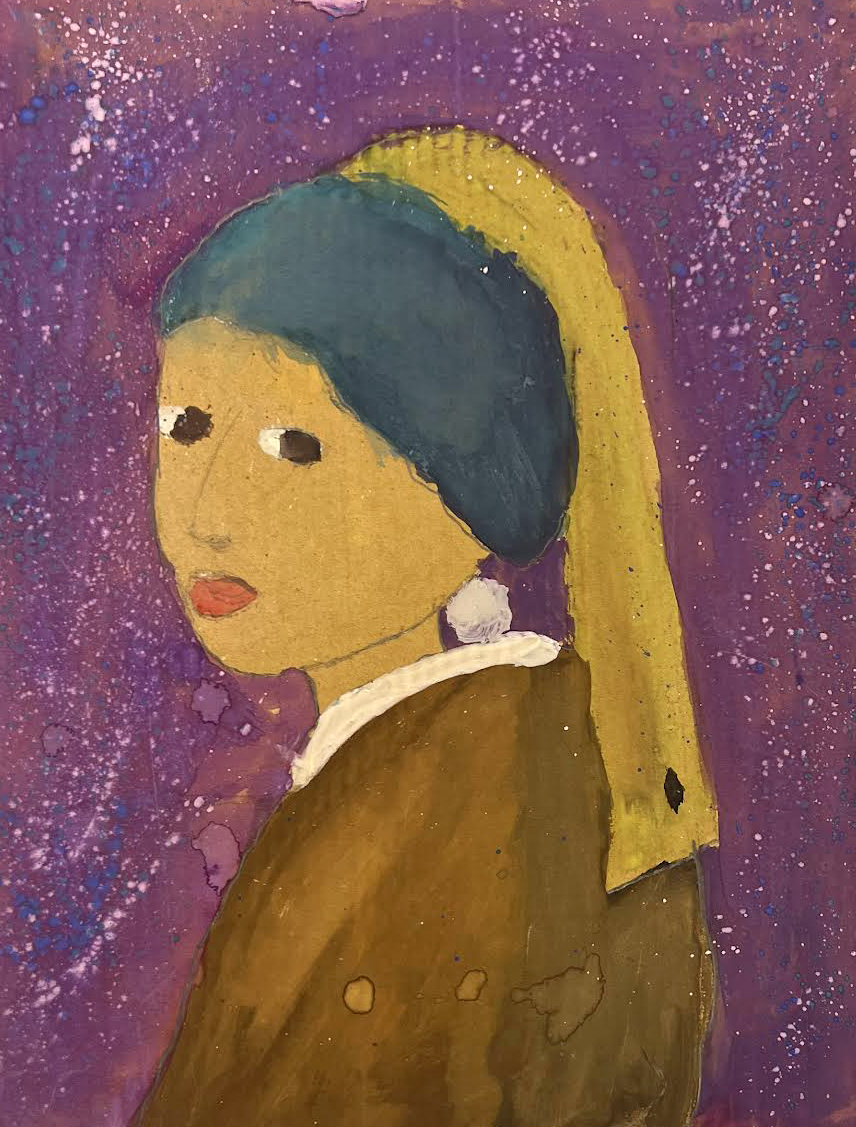Shifting Eyes Portraits
Learning Targets
I can...
- Create an original Shifting Eyes Portraits using drawing techniques learned in class
- Use line types (horizontal, vertical, diagonal), value (lightness, darkness, shadows, highlights), and texture (actual, visual, implied) inspired by Disney's The Haunted Mansion (2003) Rob Minkoff and David Berenbaum
- Use kinesthetic techniques (multi-sensory, ready made, hand operated) and design principles (movement, balance, composition) based on American Movies
- Define Portrait (a visual representation of a person which can be created in any artistic medium)
Lesson One
Day One, Art Start
1. Mona Lisa (1503) Leonardo Da Vinci
2. Read The Artist's Eyes: Vision And The History Of Art by Michael Marmor and James G. Ravine
3. Discussion Questions "What does eye tracking tell us about the rules of composition? How do painters make the eyes follow you in a painting? Why do the eyes in this painting seem to follow you? Do you think this effect happens because of a combination of elements leading the viewer through a composition? Does this mean that traditional compositional devices have no effect on our experience of the picture? How does the Mona Lisa have eyes that follow the viewer? Why do the eyes in paintings seem to follow you? Why do some paintings work in following the viewer but not other artworks? Did you know Filippo Brunellesco discovered how linear perspective creates a focal point for eye movement in paintings? How could you leverage this illusion within your own artwork? What did you learn when it comes to art history? Have you ever seen a portrait where the face or eyes appear to follow your every movement? Why would an artist want to draw a spooky portrait?"
Lesson Activities
1. Choose 12" X 15" Drawing Paper
2. Use graphite pencil to draw line types (contour, outline, continuous) of facial proportions (head, face, shoulder) of moving eye portraits
3. Use graphite pencil to add facial feathers (eyes, nose, mouth, eyebrows) to the positive space (portrait) of the Shifting Eyes Portraits
Day Two, Art Start
1. Retrieve Shifting Eyes Portraits for Assigned Tables
2. Self Portrait With Beret (1634) Rembrandt
3. Discussion Questions "What are your favorite Halloween themed monsters? Do you like mummies, Frankenstein, vampires, or zombies? How do different types of eyes reflect various emotions? How do people's eyes and body language capture emotion? How does the artist establish focal points in this painting? How does the artist change art elements to create an overall feeling or mood in this painting? How do artists create eye movement in art? How do artists use color to create eye movement in art? How can you use highlights and shadows to create eye movement in your artwork? What is the difference between shading and highlighting in an artwork?"
Lesson Activities
1. Add adornments (piercings, tattoos, hairstyles) to the positive space (portrait) of the moving eyes portraits
2. Add costumes (jewelry, clothing, make up) to the positive space (portrait) of the moving eyes portraits
3. Use black sharpie marker to outline the face features (eyes, nose, mouth) and facial proportions (head, face, shoulder) of the Shifting Eyes Portraits
Day Three, Art Start
1. Retrieve Shifting Eyes Portraits for Assigned Tables
2. Set Up Studio Area (cardboard, scissors, glue sticks, tape, tempera paint)
Lesson Activities
1. Use color combinations (analogous, neutral, secondary) to fill in the positive space (portrait, foreground) of the moving eyes portraits
2. Use color combinations (analogous, neutral, secondary) to fill in the negative space (background) of the moving eyes portraits
3. Use value (lightness, darkness) to add shadows (reflective shadow, cast shadow) and highlights (reflective light, light source) to the Shifting Eyes Portraits


























